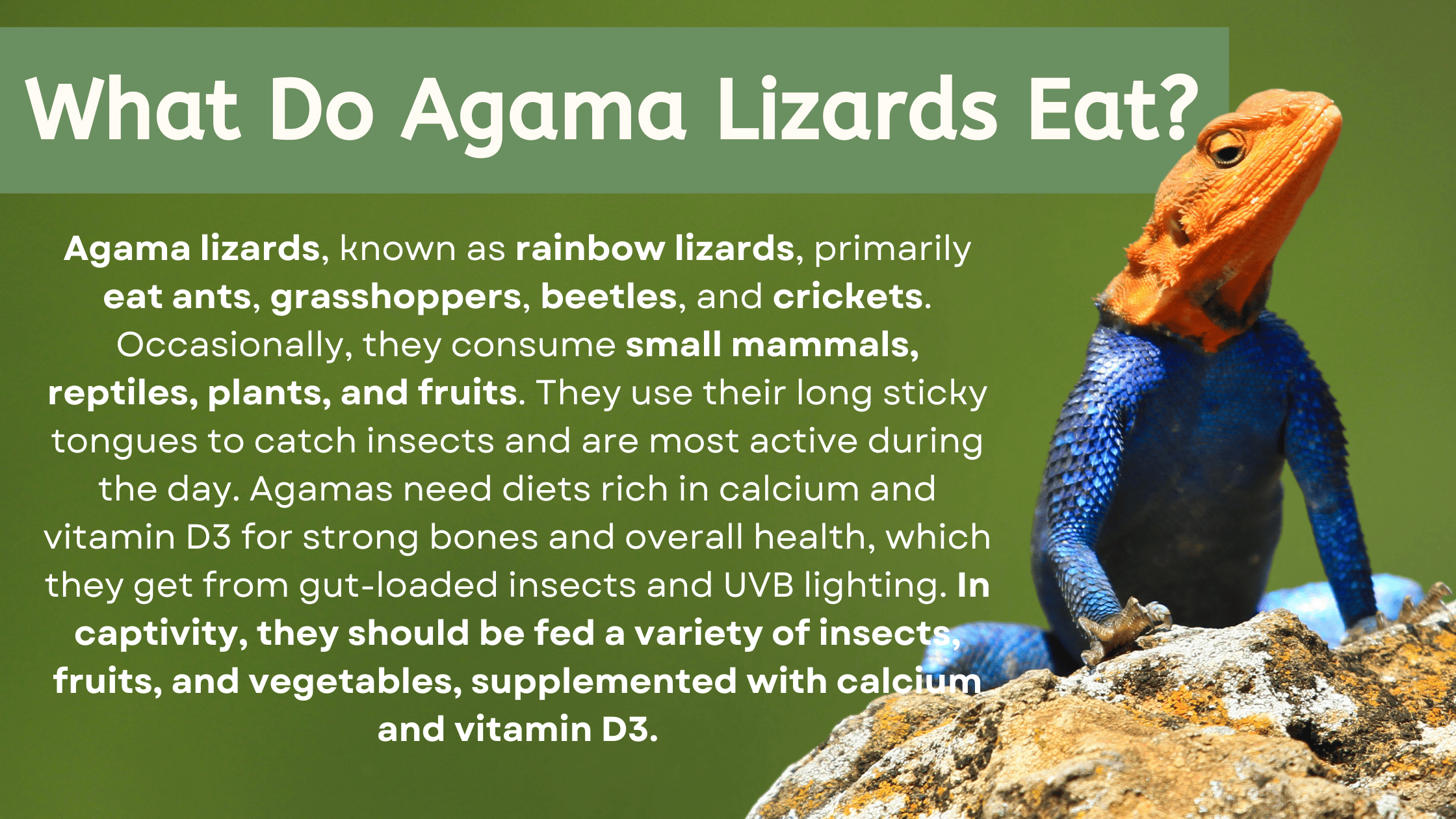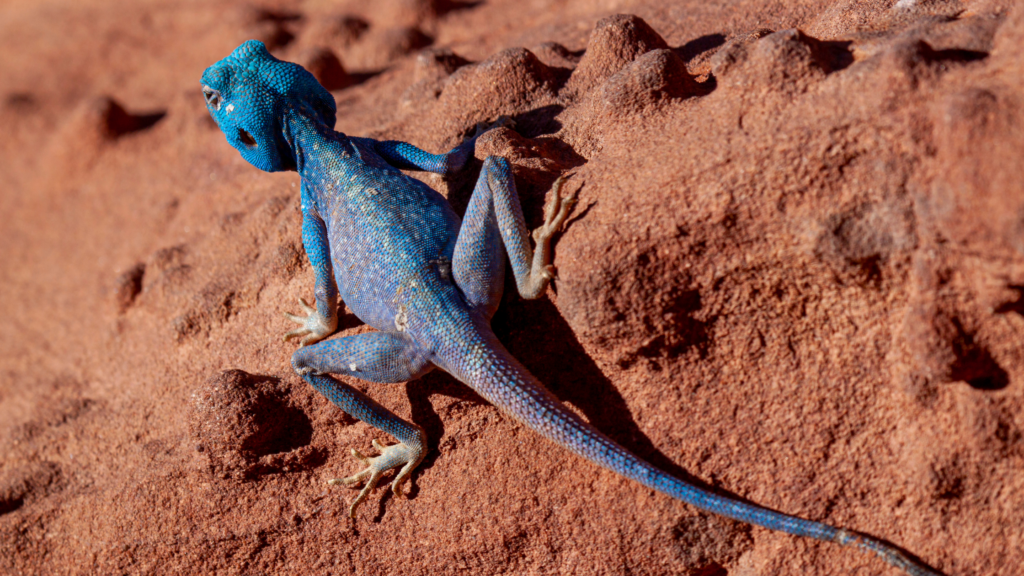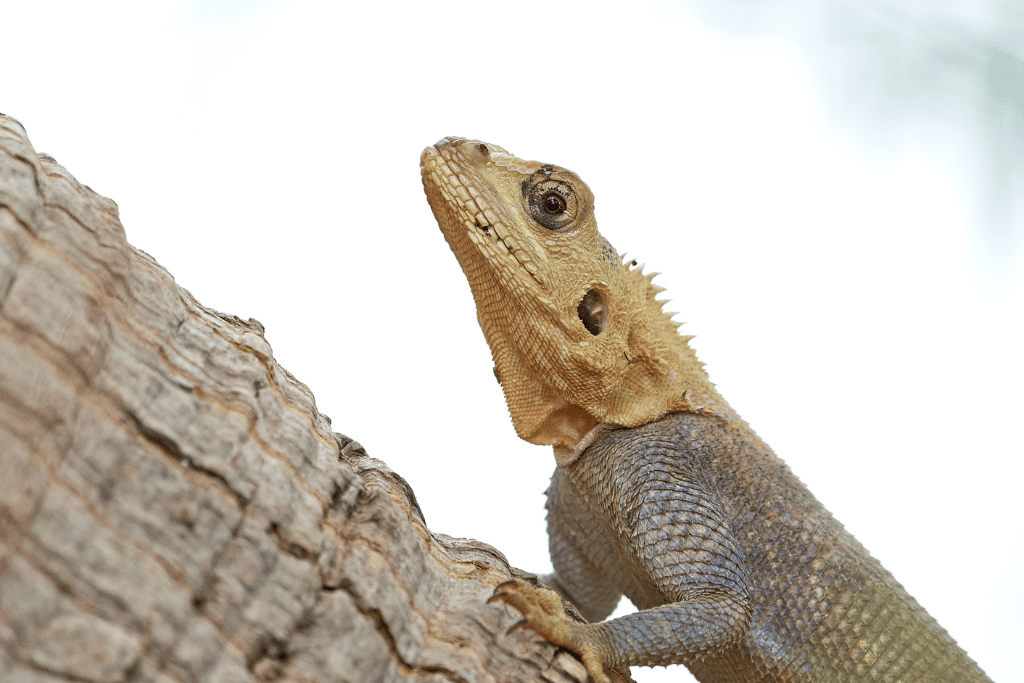One of the most popular and prominent inhabitants of the vast territory of sub-Saharan Africa is the Agama lizard commonly known as the rainbow lizard. Distinguished by the intensity of their vibrant colors and concentration of activity. These lizards are often seen basking or moving freely around the grounds with some business on their minds.
While they are focusing on their everyday habits, some can’t help but ask, what do these Agamas eat? Continue reading as we discover the diet and feeding patterns of the common Agama lizard in the wild environment.

Agama Lizard Diet and Nutrition
Understanding Agama Lizard Eating Habits
Agama lizards are primarily insectivores and therefore feed on ants, grasshoppers, beetles, and so on, but also consume sometimes small mammals, reptiles, plants, and fruits. Agamas practice certain performances such as head bouncing and sticking out their long sticky tongue to catch insects and other small animals.
Thus, agamas are distributed in Sub-Saharan Africa and may adapt to living in urban areas; however, habitat loss will cause threat display to some species.
Food Sources and Foraging Behavior
With very little variation, agamas are mostly insectivores and their diets consist mainly of ants, beetles, crickets, grasshoppers, etc all year round. They are also known to be more active during the day hunting for insects to feed on with their mouth open and long sticky tongues.
Agamas also consume reptiles and mammals but in small portions, once in a while. These animals prefer to forage in the more exposed and arid areas or sandy soil with lots of insects, they form clusters around dominant males. More insects are also available during this time so the agamas have the luxury of being picky about what they eat.
Agama Lizard Dietary Needs
Nutritional Requirements for Optimal Health
For the smooth functioning of the skeletal structure and muscles and the enhanced immune system, the agamas require diets rich in calcium and vitamin D3. Making sure that the agamas are fed with gut-loaded insects and UVB lighting is also helpful in their nutritional intake.
Feeder insects also contain different vitamins and minerals and it is therefore recommended that agama feeds on a variety of insects. For agamas to grow to their full potential, reproduce, and have good health they need to be provided with a proper diet.
Importance of Calcium and Vitamin D3
Calcium and vitamin D3 are very important in the diets of agama lizards so that they can be able to grow properly and develop strong bones. Calcium is an important factor for bone creation, and vitamin D3 is important for its absorption into the system.
An agama lizard that has no access to these key nutrient components, may develop metabolic bone disease that results in deformed and brittle bones. Monitoring and providing adequate calcium in the form of insects, small mammals, and plants that agama lizards feed on, as well as the right vitamin D3 from the UVB ray, is essential.
These nutrients can be said to help agamas perform a native range of species-related tasks and behaviors, such as head bobbing, territorial combat, a mating ritual to a dozen females during the wet season, and laying of eggs for several females. Providing feed supplements that contain calcium and vitamin D3 enhances the nutrition of captive agama foods.
Dominant Male and Subordinate Males Agama Lizard Feeding Behavior
The agama lizard, being a dominant male, gets full rights to the feeding area of his territorial range. It also has the mandate of defending territories containing prime feeding grounds against subordinate males or other less-ranking lead males.
The male agamas are usually the dominant ones which mainly depend on insect diets such as crickets, grasshoppers, and beetles. It also feeds on small reptiles and mammals if the occasion arises. Agamas have long sticky tongues for catching moving insects and remain hidden or freeze to catch small vertebrates.
The head bobbing alerts the challenger of its readiness to fight for territory and the food within such territories. The existing lead male agama can thus have further control over other males and females for reproduction after the acquisition of a vast area of ground that harbors prey. This early and easy access to nutrients and mates puts the dominating lizard in a position to benefit.

Agama Lizard Care and Management
Creating a Balanced Diet for Captivity
- A balanced diet for captive agama lizards should include a variety of insects, fruits, and vegetables.
- A calcium and vitamin D3 supplement can help ensure optimal health and prevent nutritional deficiencies.
Tips for Feeding Agama Lizards in Captivity
- Feed agama lizards a varied diet to prevent boredom and ensure they get all the nutrients they need.
- Avoid overfeeding, as this can lead to obesity and other health issues.
Common Dietary Mistakes
Agama’s relatively diverse diet can also cause some negative aspects, for example, eating stuff they should not or overindulging on particular prey objects. The care includes proper diet since these brightly colored lizards need certain nutrients to remain healthy.
Avoiding Nutritional Deficiencies and Health Issues
- Common mistakes include feeding agama lizards a diet too high in protein or too low in calcium and vitamin D3.
- A well-planned diet can help prevent metabolic bone disease, respiratory infections, and other health issues.
All in all, one can come to the logical conclusion that agamas are universal and effective hunters who, first of all, do not refrain from consuming insects and small animals. Insects such as ants, beetles, grasshoppers, and other small vertebrates are part of their diet not only do they feed on them but they also play a role in controlling these pests.
They change their proportions in response to available food resources; such lizards depict how species are interrelated to other species in their environment, and how crucial the aspects of diversity are in the ecosystems.
When heating up during the hottest hour or engaging in their own group rather peculiar head-bobbing dance, agamas remain a source of interest for scientists and laymen interested in the bright lives and feeding habits of these quite interesting lizards.
Frequently Asked Questions
How big do agama lizards get?
The agama lizard which is sometimes referred to as the rainbow lizard varies in length, but they normally grow around 12-14 inches. They are known to have a larger size than their female counterpart.
How do you feed Agama?
Most species of agamas are insectivores, they feed on insects such as crickets, grasshoppers, beetles, ants, and super worms. Agamas have sticky tongues and use these to catch insects. They may also occasionally pick up small animals such as reptiles and mammals.
Do agama lizards drink water?
Yes, the agama lizards are indeed capable of consuming water. In their particular environment, one hardly gets to see them take water from water sources but they do require this water. They do not like to drink still water, hence, the solution is to give out water through a Waterstone or water pump. Furthermore, these lizards should be misted each day, to ensure that they get enough water.
Are agama lizards poisonous to dogs?
Agama lizards are not poisonous like some snakes and therefore have no venom or toxins within their bodies. Though it may bite if threatened by predators, it is not dangerous as its teeth are very small to penetrate the skin of humans and cause much more than simple scratches. But it is still worth knowing that even friendly reptiles may carry small parasites or bacteria like salmonella, which may make dogs ill, therefore although agama lizards are not poisonous for dogs, one must be careful with their bites or any possible transmission of pathogen.



